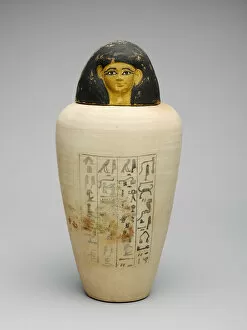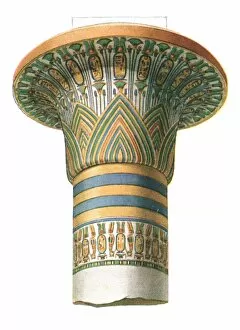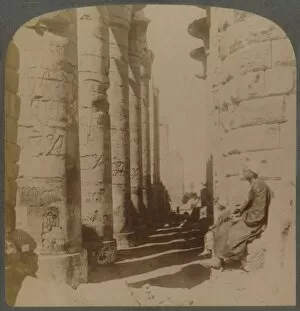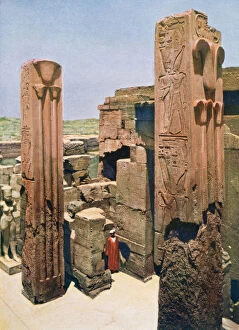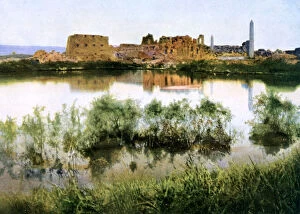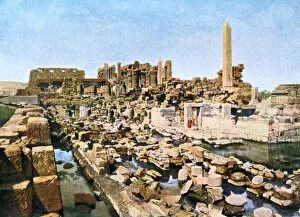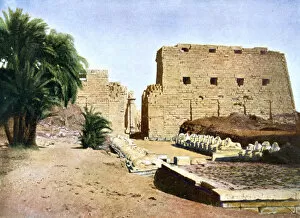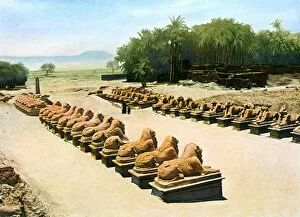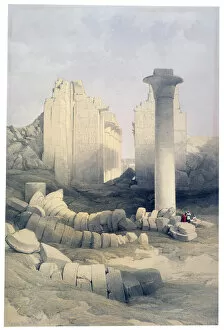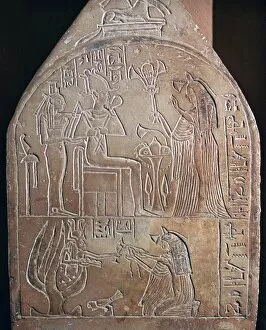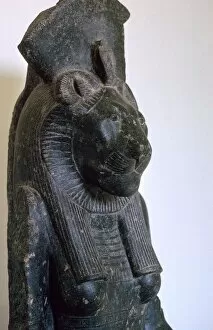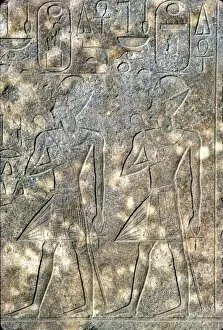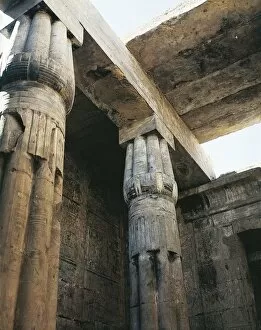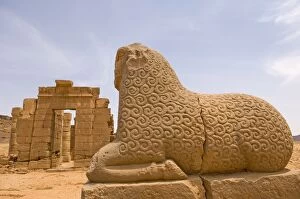Temple Of Amon Collection
The Temple of Amun, located in Karnak, Egypt, is a majestic testament to the power and grandeur of ancient Egyptian civilization
For sale as Licensed Images
Choose your image, Select your licence and Download the media
The Temple of Amun, located in Karnak, Egypt, is a majestic testament to the power and grandeur of ancient Egyptian civilization. This sacred site was dedicated to the worship of Amun-Ra, the king of gods and creator deity. One remarkable artifact found within this temple complex is the Canopic Jar of the Overseer of the Builders of Amun, Amenhotep. This intricately designed jar served as a vessel for preserving organs during mummification rituals. Its craftsmanship reflects the skill and reverence with which these rituals were performed. Another captivating feature is a capital from Karnak that dates back to 1928. Created by an unknown artist, it showcases intricate carvings depicting scenes from ancient Egyptian mythology and daily life. The famous colonnade in the great Hypostyle Hall leaves visitors awestruck with its towering granite pillars adorned with lotus and papyrus decorations. These symbols hold deep religious significance in ancient Egyptian culture. A general view reveals the sheer magnitude and splendor of the Grand Temple of Amen Ra at Karnak. The colossal structure stands as a testament to human ingenuity and devotion throughout history. An avenue lined with ram-headed sphinxes leads visitors towards this magnificent temple complex. These mythical creatures symbolize strength and protection while guiding worshippers towards spiritual enlightenment. Inside, one can explore The Dromos or Central Hall - an awe-inspiring space depicted beautifully by artist David Roberts in his 19th-century artwork. The hall's grandeur speaks volumes about its importance as a place for religious ceremonies and gatherings. Amongst numerous treasures discovered here is an exquisite funerary stele belonging to a singer in Amon's temple - offering insight into their role within this sacred space. Additionally, statues like that of Sekhmet - an Egyptian goddess revered for her protective powers - add further intrigue to this architectural marvel. Lastly, we cannot overlook Queen Hatshepsut's reign alongside her co-regent Pharaoh Thutmosis III.

